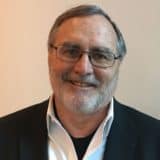
A review of Can “White” People Be Saved? Triangulating Race, Theology, and Mission edited by Love L. Sechrest, Johnny Ramírez-Johnson, and Amos Yong / IVP Academic Missiological Engagements Series, 2018
In the United States, Black men are far more likely to be hassled by law enforcement during routine traffic stops. It is also likely, in a conversation about this fact, that a white male will not appreciate the degree to which his privilege is based on longstanding racist structures.
This is not how society ought to be. We cannot be a part of a gospel solution if we deny the reality of racism and resort to self-serving defensiveness.
In 2017, Fuller Theological Seminary’s School of Intercultural Studies held a conference titled “Race, Theology, and Mission.” This book is a distillation of this conversation. A timely antidote to white naïveté about race, it explores the tight bond between Western missionary activity and racist assumptions. Historian Mark Noll says of this book that the authors here “pose a biblically based challenge to the aggressive nationalism, manipulative colonialism, and unthinking Enlightenment assumptions that long tainted Western missionary activity.”
Many of our adult dysfunctions stem from early childhood trauma. This can even go back to in utero distress. The human psyche is much more fragile than we often admit, and the depths of our wounds often ignored, as they are rarely a part of our consciousness.
Yet around ninety-five percent of our conscious behavior is dictated by our unconscious mind. A large percentage of our unconscious mind is shaped by the assumptions and dispositions of the past—a past that precedes even our own birth. This should come as no surprise to apprentices of Jesus, as the Scriptures remind us that the “sins of fathers are past down to the third and forth generations” (Exodus 34:6-7 and Deuteronomy 5:8-10). If a generation is approximately 40 years, then we are, in effect, saying that the systemic generational sins of 150 years ago are ones we are unconsciously dealing with today. Our patterns of sin are influenced by our predecessors’ sins in 1859.
This places us in the tumultuous divisive years just prior to the Civil War. 1859 was when John Brown led a raid on the federal armory at Harpers Ferry with the intent to start a slave rebellion. He was later captured by troops led by Robert E. Lee and was hanged for treason.
If slavery is the United States’ “original sin,” and if this sin has been stamped into the woof and warp of American society from its beginning, it is hardly surprising that expressions of racism and charges of racism continue to be headlines on the nightly news.
If slavery is the United States’ “original sin,” and if this sin has been stamped into the woof and warp of American society from its beginning, it is hardly surprising that expressions of racism and charges of racism continue to be headlines on the nightly news. Denial does not change its reality, particularly for people of color. The only people really surprised by the continuing problem of race are white Christians. Such awareness does not minimize American contributions to civilization. But it is necessary to be able to humbly acknowledge our past failures and present challenges. US history, like all reality and every person, is not all good or all bad, but a messy shade of gray. It is into this messy grayness that grace is so essential.
Many Christians are becoming increasingly aware of their complicity in furthering the patterns and structures of long-established systemic racism. Sadly, this awareness has been heightened for white Christians by the realization of the “imminent loss of white social dominance.” The United States is rapidly becoming a “minority majority” country. White dominance and white privilege are fading. Under these changing demographic realities, public turmoil on race is predictable. What is most troubling is how much white Christians continue to be blind to the role they continue to play in being a part of the problem.
Behind the political controversies surrounding race, immigration, homelessness, poverty, and LGBTQ rights is the repeated pattern of “othering” difference. It is all of a piece. It was into this ancient pattern of “othering” that Jesus asked, “Who is your neighbor?” and then told the story of a wounded traveler. It doesn’t matter who is lying in the ditch. White evangelicals too often act like the priest and Levite that walked by on the other side of the road. It took a person who knew the contempt of being othered, a Samaritan, to show compassion.
White evangelicals too often act like the priest and the Levite who walked by the wounded traveler on the other side of the road. It took a person who knew the contempt of being othered, a Samaritan, to show compassion.
Theologians are now rightfully describing the behavior of “othering” as “an idolatrous way of being in the world.” So they ask, pointedly, “Can ‘white’ people be saved?” It remains an open question.
The significance of this book is how it links racist and colonialist attitudes of the nineteen-century with the rise of the missionary movement. The authors are pointed, but fair. They acknowledge, “White people and the whiteness project are not necessarily one and the same.” But they also show the inherent complicity of Christianity with the white project and call it for what it is: a blatant form of idolatry.
We do not live in a post-racial society. None of us are “colorblind.” Such denials are only further evidence of the degree this sin has embedded itself deeply into our unconscious. The purpose of this essay collection is to build “a new missiology for race relations in the twenty-first century.” It is time for white Christians to humbly embrace their ongoing role in “othering” difference. Worth the price of the book is Fuller professor of ethics Erin Dufault-Hunter’s closing essay, a reprise of C.S. Lewis’s classic The Screwtape Letters. Here the master demon gloats, “The outcome of our strategy is that few recognize that whiteness determines their existence more than any other god.”
This book struck me hard. I am the son of medical missionaries. My grandfather was the Secretary of Negro Work for the Southern Presbyterian Church and president of Stillman College in 1947, a historically Black college in Tuscaloosa, Alabama. My childhood was steeped in these discussions. My father forbade us from playing the board game Risk, as he thought it taught imperialism. I remember on furlough being dragged out of a breakfast diner before our food arrived when my father realized that the diner did not serve Blacks. I remember in the sixties when missionaries shifted their language from talking of Koreans as “natives” to “nationals.”
And yet, the two missionary high schools in Korea symbolically illustrate the depth of the problematic missionary legacy. The mascot of our rival high school, Seoul Foreign School, was the red and white Crusaders. My own high school, Korean Christian Academy (not to be outdone) was the purple and gold Imperials. Somehow they had missed the Hudson Taylor memo or the lesson of the Boxer Rebellion in China. White Christians like myself need to face up to our role in this complex and often unconscious history. Reading this book is a needed and valuable first step. The truth is that one can be a racist and not know it.
 John Seel is a consultant, writer, cultural analyst, and cultural renewal entrepreneur. He is the former director of cultural engagement at the John Templeton Foundation, and author of The New Copernicans: Understanding the Millennial Contribution to the Church. He has an M.Div. from Covenant Theological Seminary and a Ph.D. in American Studies from the University of Maryland (College Park). He blogs at New Copernican Conversations, and he and his wife, Kathryn, live in Lafayette Hill, PA.
John Seel is a consultant, writer, cultural analyst, and cultural renewal entrepreneur. He is the former director of cultural engagement at the John Templeton Foundation, and author of The New Copernicans: Understanding the Millennial Contribution to the Church. He has an M.Div. from Covenant Theological Seminary and a Ph.D. in American Studies from the University of Maryland (College Park). He blogs at New Copernican Conversations, and he and his wife, Kathryn, live in Lafayette Hill, PA.


